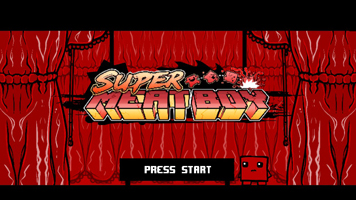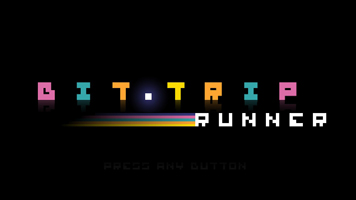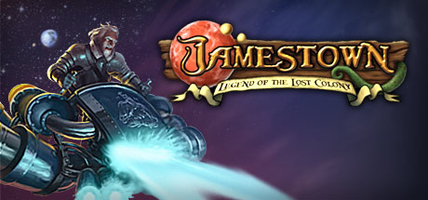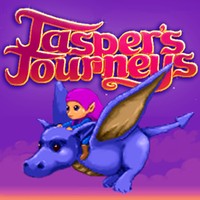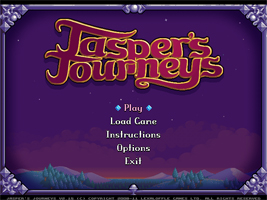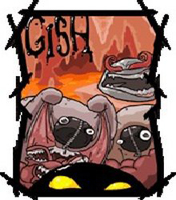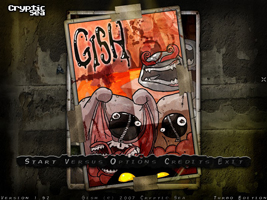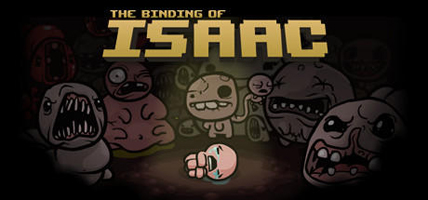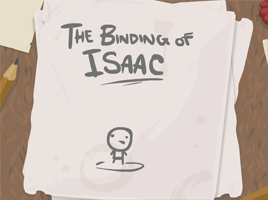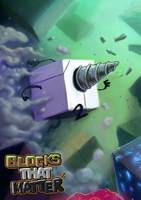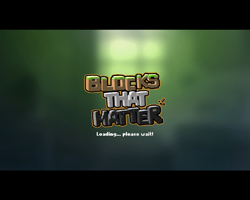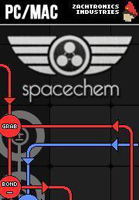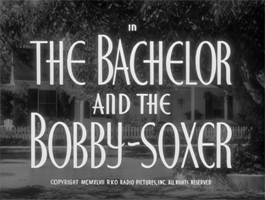
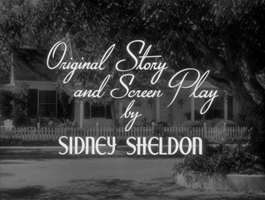
Winner in the category of WRITING (Original Screenplay) at the 20th Academy Awards, presented Saturday March 20, 1948 at Shrine Civic Auditorium.
The other nominees were:
Body and Soul — Abraham Polonsky
A Double Life — Ruth Gordon, Garson Kanin
Monsieur Verdoux — Charles Chaplin
Shoe-Shine — Sergio Amidei, Adolfo Franci, C. G. Viola, Cesare Zavattini
THE BACHELOR AND THE BOBBY-SOXER
Screen Play
by
Sidney Sheldon
FADE IN
EXT. STREET – DAY
1MED. SHOT – SHOOTING FROM curb TOWARD Judge Turner’s house.
The house is neither tremendous nor over-elaborate; it is a pleasant one and a half story structure, neat and trim, with a flower bed and a gently sloping green lawn. As the CAMERA TRUCKS UP the walk, the MUSIC follows it in rhythm in a motif of musical footprints that takes us right to the front door. As we reach the front door,
DISSOLVE
INT. DINING ROOM – DAY
2MED. SHOT – SHOOTING TOWARD kitchen door.
Bessie, an attractive, young negro is setting a dish on the table. CAMERA PANS Bessie as she sets the dish on the table and the electric clock begins tinkling the stroke of eight. When she hears the clock, CAMERA PANS with her as she hurries out of the dining room and starts toward the stairs. CAMERA TRUCKS with Bessie as she reaches the lower step of the short flight leading to the bedroom corridor. CAMERA HOLDS as she continues up the steps.
First line in film:
ADAM Everyone in that movie was more charming than I thought they were going to be. I thought Shirley Temple was going to be sort of a dope, but actually she seemed to be more sophisticated than I gave her credit for. Bravo, Shirley Temple.
BETH Well, you know, she’s been in show business since the age of three, so she knows what to do.
ADAM She reminded me of Justin Bieber.
BROOM You know who she reminded me of.
BETH Yes, we do. It was really witty, I thought.
ADAM Yeah, wittier than I thought it was going to be when it started.
BETH When it started, it felt like a Disney cartoon, where the music was doing all of the work.
BROOM When four different windows got “funny window-opening music.” I think that was standard for opening cues, in a lot of these movies, where the composer felt like, “I’m going to explain what kind of movie this is, at the outset.”
ADAM And then the black maid was like, “Good mornin’, Miss Susan!” and was grinning from ear to ear, and I was like, “What’s going on.”
BROOM You didn’t realize that was going to be her only scene. You thought we were gonna see a lot of her.
ADAM She was like when Lucille Ball has her name written on the soles of her shoes, when she plays the corpse.
BROOM I don’t know what that refers to.
ADAM It’s a scene from I Love Lucy where Lucy Ricardo has a scene in a movie. She’s determined to make the most of it; she’s going to play a corpse. So she writes her name on the bottom of her shoes.
BROOM I just meant that they gave such attention to the maid at the beginning that you thought, “Oh, the maid’s going to be her confidante; she’s going to be privy to all the comic goings-on.” But she just disappeared after she woke the characters up.
ADAM So there was no Woman of the Year-style wink, at all, to the fact that Margaret Turner is a judge.
BROOM Absolutely there was, in the opening, when the maid says, “If you don’t wake up, I’m gonna get the judge,” and then she goes to wake up the judge, whose head you can’t see because of a lampshade…
ADAM I understand that they play with your expectations that it’s not going to be a woman, but there’s no actual discussion of the fact that Margaret Turner is a judge: how she got to be a judge…
BROOM She got to be a judge because her uncle was a judge, or she came from a family of attorneys, or whatever…
ADAM I understand how she got there, but it played it pretty cool about the fact that she was a lady judge. Which I liked. She did remind me of Judge [REDACTED].
BETH I couldn’t tell if that was a sarcastic comment or not, when you made it.
ADAM No, actually; she does kind of remind me of Judge [REDACTED]. You can blank that out in the transcript. You can just say Judge…
BROOM Reinhold.
ADAM That birthday sequence obviously was the best.
BROOM The director and the screenwriter were clearly, like, “We’re going to earn this scene where everything goes crazy.” Farce!
ADAM A lot of it was fun. When Cary Grant pretends to be a juvenile to try to lose Susan’s affection, it’s pretty funny. When Susan is using the elevated vocabulary, that’s pretty funny.
BROOM Was he doing that to lose her affections? The slang and the costume?
ADAM Yeah, I thought he was trying to reverse-psychologize her.
BROOM I thought it was just a kind of, like…
BETH Giving a middle finger to the whole situation.
BROOM Yeah. “You want me to play the role, then here you go.” Because she actually was into it. She was having a great time that day.
BETH I think his whole objective was to make her not like him, and he was just trying anything he could think of.
ADAM As you might.
BROOM As you might under these rather unusual circumstances. I thought this was strikingly, like, serenely divorced from any conception of reality. Early on, I had a few thoughts… The movies that have won for screenplay seem to be things that have good repartee but are sloppy about other things; like here when the bellboy’s like, “I’ll help you, I’m fifteen.” “I’m seventeen.” “Well, I like older women.” And then he gets up to the apartment with her and immediately says, “Well I have work to do, goodbye.” I thought, “What a terrible line. You could have gotten rid of that character any way you wanted, and this is so stupid and unmotivated.” But then a few minutes later, I started to understand that the whole movie was just a series of events, and that was okay.
ADAM It certainly accelerated toward the end. In the first fifteen minutes, I was like, “What? What are we watching? What is this nonsense?”
BROOM True nonsense.
ADAM But then it got better.
BROOM I know this is a little after the era of the true “screwball,” but this was essentially a screwball comedy. It was just loopy-loo.
BETH It was great.
ADAM I don’t think I’ve ever seen Myrna Loy in anything. But she was super funny, and pretty, and engaging. She deserves to be famous.
BROOM You should see the Thin Man movies. She was hotter then.
ADAM She’s Nora Charles?
BROOM Yes.
BETH Yeah, when I first saw her here I thought, “Oh, I thought you were sexier,” but it was ten years later.
ADAM She was pretty sexy, actually.
BROOM She was sexy for “an ice-cold judge.”
ADAM Is this the first time a lady judge has been featured in American popular culture?
BROOM I don’t know; maybe. Do you want to look that up under the “Female Judges in Popular Culture” category page on Wikipedia?
ADAM You know the only Wikipedia page I ever created was for America’s first female district court judge, Burnita Shelton Matthews.
BROOM Did you have an “In Popular Culture” section?
ADAM She became a federal judge right around this time, actually.
BROOM Do you want me to redact the name of the article?
ADAM No, of course not.
BROOM You want me to link to it.
[ADAM shows off the Burnita Shelton Matthews article]
ADAM She became a district court judge in 1949.
BROOM Maybe inspired by this movie.
BETH So you do have a connection, ADAM.
ADAM So there may have been state court judges before this…
BETH You have two connections: one to the lady judge, and one to dating a much older person in high school.
BROOM So this movie was a fantasy, of a thing that had never happened, like a movie with a female president.
ADAM I’m saying, Burnita Shelton Matthews was a federal court judge; there were probably state court judges before that. But probably not a lot; it was probably single digits.
BETH Maybe the war had brought them in, somehow.
ADAM And they certainly didn’t look like Myrna Loy.
BROOM I don’t know; her Wikipedia picture looks a little like Myrna Loy.
ADAM I liked Myrna Loy’s suit. I liked her hair. I liked her eyebrows.
BROOM Sure. She’s got a very distinctive nose. No other actress has had that nose.
ADAM Yes, her nose and her chin were, like, the same. I liked when uncle Thaddeus got angry about all the door-slamming.
BROOM And threw the chess pieces.
ADAM I liked the name of the other couple that had the birthday. I liked the fact that the angry couple got their cake delivered in the middle of the argument.
BETH That was a great scene.
BROOM I laughed hard during that scene; I laughed out loud for real, not a charity stupid movie laugh.
ADAM I liked the timeworn gag of “My patient thinks he’s the assistant district attorney.” Spoiler alert.
BROOM Yeah, that’s always a great one!
ADAM I liked the repeated repartee of “You remind me of a man.” “What man?” It was stupid, but…
BROOM Is this the source of that?
ADAM I didn’t know it was a “that.” Is that a “that”?
BROOM Because if it’s not a “that,” when it’s introduced it’s extremely strange. And I know it from Labyrinth, where David Bowie used it in a song he sings. Clearly there as a reference to something from an old movie. I guess this is the old movie, but in the context of the movie it sure seems like it’s supposed to be a pre-existing routine.
BETH I bet it’s a reference even in this movie.
BROOM Yeah, it’s like it’s being presented as “the kind of doggerel that the kids of the 40s are saying.”
ADAM What is it? [googling]
BROOM “You remind me of a man.” “What man?” “The man with the power…”
ADAM That goes directly to “The Bachelor and the Bobby-Soxer.”
BROOM So it was coined for this movie, huh?
ADAM Yeah. The first five links are all to The Bachelor and the Bobby-Soxer.
BROOM OHHH, so the reference in Labyrinth is that he’s an older man and she’s a teenage girl, and he’s sort of courting her in a dream world. Except he says “You remind me of the babe.”
[reads from the Wikipedia article on Bachelor under “Influence“]
BROOM It’s a very strange bit of patter, because it’s in the context of him using a lot of slang and being a teenager, and Susan immediately latches on to it and does the other part perfectly. So I thought it was supposed to be that this is a thing that contemporary kids say to each other.
BETH Which it might have been.
BROOM Well, not according to Wikipedia, which you’d think would know.
BETH Well, it could have been a thing that was in Hollywood culture… some kind of teen culture. This felt like the first movie about teenagers. Where, you know, she was such a teenager.
BROOM I think there were always movies about teenagers, but we don’t watch them anymore because they were junk.
ADAM I don’t know. This was certainly the first one in our catalogue.
BROOM You mean teenagers as we think of teenagers now.
BETH Yeah.
ADAM “Golly gee!”
BETH Like All the Cats Join In, like I said during the movie. It felt like the exact same era. They go to a juke joint and it looks just like the cartoon. And they get in the car like in the cartoon. That kid, Jerry, looks just like the cartoon version of Jerry.
BROOM They also go to Family Fun Night, or whatever that was.
ADAM If Shirley Temple knows that they’re in Jerry’s car, then what good is that? That’s why I assumed that he was putting on this ridiculous persona to try to lose her: because he intentionally takes the worst car.
BETH Right. I think he wants to make a bad impression on everyone, so they’ll all encourage her…
ADAM He rolls up his pant leg in an asymmetrical way. I don’t have a lot of deep thoughts about this movie, but I did enjoy it.
BETH I did too.
BROOM As did I.
ADAM If it was on AMC I would unreservedly recommend watching it.
BETH It felt jubilant in a post-war way. It felt like, “We’re free!”
ADAM “Dere ain’t no Nazis in dis movie!”
BROOM Yeah, I mean, the joke where Jerry wants pity because he’s gotten drafted, and Susan says, “The war’s over, Jerry,” and he says, “Well, I might fall on my bayonet.” I thought, “Wow, that’s really indicative of a new mood.” You know, nowadays, we’d…
ADAM “Is this how you treat a veteran?”
BROOM Well, we’d feel like, “Is this how you treat your veterans, by putting such a joke in your movie?” About how there’s nothing dangerous anymore. But that was exactly the attitude after World War II: yes, there’s nothing dangerous anymore or ever again. That all happened last year.
BETH It’s so over.
BROOM “We can totally make jokes about how being drafted is a nothing.” But that felt like a strange beat to me.
ADAM I think probably people were less solemn because their feelings were less out in the open, in the forties. Maybe this is just my pop psychologizing, but it seemed like veterans who returned from the war, instead of talking about it ad infinitum as they would now, they not-talked about it, which was better form. I mean, not in an absolute sense, but in the sense at the time. You know, they didn’t talk about it until fifty years later, when Saving Private Ryan came out. But at this point, everyone was just, like, “Gee whiz! Let’s move on!”
BROOM I have noted — I probably brought this up during the Disney project but that’s so many years ago now, that we were watching movies from this era! — that when I put together these playlists on Spotify of the top Billboard-charting songs from each decade, I think I took 20 from each year, I was really struck in going through those that in the immediate post-war years, the late 40s-early 50s, very suddenly all this completely infantile garbage was popular. Like, not true innocence but a put-on baby-talk innocence. Like, “How Much Is That Doggie In The Window” is the best of these songs. That was like a number one hit!
ADAM Avoidance as opposed to wallowing.
BROOM Yeah, a kind of avoidance. Which then became that 50s thing, of institutional “Everything is Great!!!” Denial really seemed to be the primary form of postwar celebration in the mass culture.
ADAM Well, they seemed to live in a sunny California that had no relation to any political or social trend of any kind. I mean, he was an artist, but he didn’t actually produce or interact with any art of any kind, at all. And he had no evidence of having been in the war, even though he was 35. So, yeah, it seemed willfully pleasant.
BETH How old was he really? He looked older than that, didn’t he?
BROOM I think he was older than that.
ADAM How old was she? Was she 35? Because if so that makes me feel terrible about myself.
BROOM The actress?
ADAM No, the judge.
BROOM The character, or Myrna Loy?
ADAM The character.
BROOM There’s no way of knowing how old the character was!
ADAM Well, Shirley Temple said, “When I’m 42, he’ll be 60,” and we know she’s 17.
BROOM Yes, that’s how we determine how old he was, but there’s no way of knowing how old she was.
ADAM But the judge must have been younger, because it would be inconceivable for an older woman to be with a younger man in a Hollywood movie.
BROOM But she was a judge!
BETH [has looked it up] Myrna Loy was 37. No wait, she was more than that, I’m sorry.
BROOM [looks it up] She was 42.
ADAM She was 42 in that role?
BETH Cary Grant was 43, playing 35.
[we read various tidbits about Myrna on Wikipedia]
BROOM Here’s what’s actually interesting to read on Wikipedia. The person who won an Academy Award for this movie, that we’re ostensibly celebrating here, is Sidney Sheldon, born Schechtel, who is the Sidney Sheldon.
ADAM The romance writer? ‘Cause when that flashed on the screen, I was like, “Really??”
[we read from his Wikipedia page, noting that in addition to writing this movie and his many bestselling novels, he also created The Patty Duke Show and I Dream of Jeannie]
ADAM Well, this definitely seemed to have a cousinship with The Patty Duke Show. She seemed like she “loves to rock and roll, a hot dog makes her lose control; what a wild duet.”
BROOM I never watched The Patty Duke Show. Did she speak in highflown language like Shirley Temple does here?
BETH Well there’s two.
ADAM “Our Cathy adores a minuet, the Ballets Russes, and crêpe Suzette; our Patty loves to rock and roll, a hot dog—”
BROOM Uh-huh, yeah, I got it. So you’re saying she was like Patty?
ADAM Well, she was like Patty but she also had touches of Cathy. At the beginning, I forget all the things she said in highfalutin’ tones, but…
BROOM She had one line that was so highfalutin’ that I couldn’t follow it.
ADAM Yeah, this seemed to have almost nothing to say about social trends or anything. But maybe that’s the point. Certainly nothing about race or gender, particularly. Even though a movie about a woman judge really should have something to say about gender, and it didn’t. Other than that a lady judge also looks pretty in a dress.
BROOM [reading from the Sidney Sheldon article:] “Most of his readers were women. Asked why this was the case he said: ‘I like to write about women who are talented and capable, but most important, retain their femininity. Women have tremendous power — their femininity, because men can’t do without it.’
ADAM “Hubba, hubba!” Well Beth, let that be a lesson. To everyone.
BROOM I guess. He’s the one who invented the female judge, as you point out.
BETH Should we find the review? I don’t have anything else to say.
ADAM I don’t have a lot to say either.
[we read the New York Times review]
ADAM Maybe having a woman judge in this movie was like having a black woman judge on TV in the 90s, on Law and Order. [reads:] “Florence Allen became both the first woman to be elected to the positions of general jurisdiction court in 1920 and the first female state appellate judge through her election to the Ohio Supreme Court in 1922. She later became the first female federal appellate judge, appointed to the 6th Circuit in 1933.” So actually she was on the bench 10 years before Burnita Shelton Matthews.
BROOM Going into this, I thought the whole idea of making a movie on this premise was going to be sleazy. “I know, the man and the teenage girl will be forced into compromising situations, and we’ll come up with some excuse to put it onscreen by having everyone keep saying it’s a bad idea.” But the movie was genuinely so bizarre that…
BETH It wasn’t salacious in any way.
BROOM It really managed to put me at my ease. I genuinely couldn’t imagine any Hollywood producer having a secret salacious reason for putting this together.
ADAM Even when she wakes up in his apartment?
BROOM She’s remarkably sexless, for a pretty teenage girl.
BETH That’s what I was about to say. Think about 17-year-old girls now, and how much they would come on to someone, to the equivalent of Cary Grant. George Clooney. If you made this movie today with George Clooney and some hot 17-year-old.
BROOM Well, you’d cast Ellie Kemper, naturally. I mean, of course now she’s 34 years old, or whatever she is.
BETH But she’s also the sexless equivalent. She has made herself in that image.
BROOM Yes, I know. She is exactly the same as teenage Shirley Temple.
ADAM It would be Selena Gomez.
BROOM She’s not sexless, though; doesn’t she date Justin Bieber?
ADAM I know, I know.
BROOM Who do we have? We don’t really have bright-eyed youth, anymore. That’s how Ellie found her niche, but now she’s too old.
ADAM Dora the Explorer.
BETH I’m sure there’s someone from the Disney Channel.
BROOM There’s Jane The Virgin. She’s a virgin, I gather.
ADAM Or Lindsay Lohan in The Parent Trap.
BETH Sure, but she was like 13 in that movie.
BROOM How old was Shirley here, actually? This was one of her last movies. [we look it up:] 18 or 19.
[we then read more about Shirley Temple and Myrna Loy and the conversation drifts pretty far afield, but then comes around to:]
ADAM I mean, why do we think Cary Grant wouldn’t have liked having this girl have a crush on him?
BROOM That’s why you’d make a remake: you’d just make him gay.
ADAM But then who’s he into?
BROOM The judge is a man!
ADAM That sort of fore-ordains the ending.
BROOM So did this! I mean, you could change it around. You could have him be into the school principal or something. But had he been gay, it would have been…
ADAM Just as plausible.
BROOM Well, the central situation would be more plausible. It would have been very cleanly, like, “She has a crush on you, and you need to learn to take other people’s feelings seriously.” Because why wasn’t he at all interested in her?
BETH Because he’s Cary Grant! It really was playing on the fact that he was Cary Grant.
BROOM I enjoyed the line “I wouldn’t say this to many people, but I’m old enough to be your father.” On the one hand, the joke is, the people have to be young enough for him to say that to them, but on the other hand, the joke is, most young girls coming on to him, he wouldn’t be inclined to stop.
BETH Yeah, so it’s something about her. The two personas, and how they conflict.
BROOM Do you think she was really editor of the school paper?
ADAM Probably. If she was in high school in 1947, that means she would be 80-something today.
BROOM Weren’t you going to find out what happened to Jimmy?
[we read about the life of Johnny Sands… then debate whether to skip 1948 because no “best original screenplay” was awarded… we decide not to skip the year; stay tuned for details]
Last lines in film:
– You remind me of a man.
– What man?
– The man with the power.
– What power?
– The power of hoodoo.
– Who do?
– You do.
– Do what?
– Remind me of a man.
– What man?
– The man with the power. Give up?
– Give up. Let’s go.
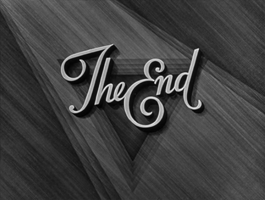
I believe this is the first year in a while for which I absolutely cannot find the Academy Awards ceremony radio broadcast, which dismays me. I don’t see it listed in any OTR (“Old Time Radio”) resources, so I wonder if it’s simply not available outside of the Academy library. If anyone reading this wants to point me toward a copy online, that would be appreciated. Here’s the only available clip that I can find: the best supporting actor presentation.
Furthermore, the rather spotty speech database contains several speeches from the ceremony, but not this category. Phooey!
Here’s what there is: newsreel footage of highlights from the ceremony.

